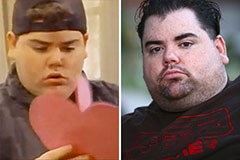Listed here in the next paragraphs you might get some very good information and facts regarding 4 Ways to Troubleshoot Low Water Pressure.

Low tide stress in your home can be a discouraging problem, impacting every little thing from showering to cleaning dishes. If you're experiencing weak water circulation, there are several possible reasons and options to explore. In this guide, we'll review common reasons for low tide stress and practical actions to address the problem effectively.
Introduction to Low Tide Stress
Low water stress takes place when the flow of water from your faucets, showers, and other fixtures is weak than typical. This can make day-to-day tasks a lot more tough and less effective. Recognizing the reasons for low tide stress is essential to discovering the ideal remedy.
Usual Causes of Low Water Pressure
Pipe Obstructions
With time, pipelines can come to be obstructed with mineral deposits, debris, or particles, limiting the circulation of water. This is an usual concern in older homes with galvanized steel pipelines.
Deterioration
Rust within pipes can lead to leaks and minimized water stress. Corrosion accumulation can restrict water circulation, specifically in aging plumbing systems.
Faulty Stress Regulators
Stress regulators are accountable for preserving consistent water stress in your house. If they malfunction, it can cause low tide stress or unequal circulation throughout the house.
Community Water System Issues
Often, the issue lies outside your home. Metropolitan supply of water problems, such as main line leakages or upkeep work, can briefly reduce water pressure in your location.
Exactly How to Diagnose Low Water Pressure
Checking Faucets and Fixtures
Beginning by testing the water pressure at different taps and components throughout your home. If the concern is isolated to certain areas, it may show localized problems.
Evaluating Pipes
Check noticeable pipelines for signs of leaks, deterioration, or obstructions. Take notice of any type of unusual audios, such as knocking or rattling pipelines, which can suggest concerns within the plumbing system.
Consulting with a Plumber
If you're unable to determine the root cause of low tide pressure, consider working with a professional plumber to carry out a detailed inspection. They can identify underlying issues and suggest proper options.
Do It Yourself Solutions to Fix Low Water Stress
Cleaning Up Aerators and Showerheads
Mineral deposits can build up in aerators and showerheads, reducing water circulation. Eliminate and clean these components on a regular basis to improve water pressure.
Flushing Hot Water Heater
Sediment build-up in the hot water heater can limit circulation and decrease efficiency. Purging the container periodically helps eliminate sediment and maintain ideal performance.
Checking Pressure Regulatory Authority
Guarantee that the stress regulatory authority is working correctly. Adjusting or changing the regulator can assist restore correct water stress throughout your home.
Clearing Clogs in Pipeline
For minor obstructions, try making use of a plumbing snake or chemical drain cleaner to clear obstructions in pipes. Be cautious when utilizing chemicals and comply with safety and security guidelines.
When to Call an Expert Plumber
If do it yourself efforts stop working to solve the problem or if you suspect considerable plumbing troubles, it's finest to seek assistance from a qualified plumber. They have the competence and devices to resolve intricate problems securely and properly.
Preventive Measures to Preserve Water Stress
Normal Maintenance
Set up routine upkeep for your plumbing system to avoid issues such as deterioration, leakages, and clogs. Attending to small troubles early can help prevent more considerable repair work later on.
Installing a Pressure Booster
Think about installing a stress booster pump to enhance water stress in areas with consistently low circulation. This can be specifically advantageous for multi-story homes or residential or commercial properties with high-demand fixtures.
Monitoring Water Usage
Be mindful of water usage practices and stay clear of overtaxing the plumbing system. Simple adjustments, such as staggering showers and laundry loads, can help keep ample water pressure.
Final thought
Managing low tide stress can be discouraging, yet determining the underlying reasons and carrying out ideal solutions can bring back optimum circulation throughout your home. Whether it's cleaning up aerators, evaluating pipes, or speaking with a plumber, taking proactive steps can make certain a consistent supply of water for your day-to-day demands.
FOUR WAYS TO FIX LOW WATER PRESSURE NOW
Turning on a shower or faucet only to find the water comes out in a sad, slow drizzle is never a good feeling. How exactly are you supposed to wash a pan or take a quick shower when it takes 10 minutes just to rinse off a little soap? The good news is that when your water pressure is bad, there's always a cause: typically one that can be easily fixed. Here are some of the most common causes of low pressure and what you can do to fix the issue:
DEBRIS AND MINERAL DEPOSIT BUILDUPS
If you notice low water pressure from just one or two of the fixtures in your house, the problem likely has to do with debris buildup. Water is full of minerals and other debris, all of which can accumulate in your pipes and on your fixtures. This can cause a blockage that affects how much water flows through. To fix this, try filling a small plastic bag with white vinegar, and use a rubber band to hang it around your showerhead or faucet. Let the head of the fixture soak for a few hours, and the vinegar should loosen the deposits.
WATER LEAKS
Leaks are another common cause of low water pressure. If water is flowing out of your plumbing through a hole or crack before it can reach your fixture, the pressure coming out of the faucet or showerhead will be lower. A plumbing professional is your best bet for finding and repairing a leak in your water supply pipes.
Leaks are another common cause of low water pressure. If water is flowing out of your plumbing through a hole or crack before it can reach your fixture, the pressure coming out of the faucet or showerhead will be lower. A plumbing professional is your best bet for finding and repairing a leak in your water supply pipes.
A VALVE ISSUE
If you have low water pressure throughout your home, check your main shut-off valve to make sure it's completely open. You may also want to see if there's a pressure-reducing valve installed. If there is, have a plumber help you adjust the settings to get the pressure you're looking for.
OTHERS USING WATER
Believe it or not, your low water pressure could be caused by your neighbors. If you notice low pressure at certain times of day, it may be because you and the people living next to you have similar schedules - when everyone is showering at the same time, the pressure will be lower in every home. Low pressure throughout the neighborhood may also be caused by an issue with your municipal water supply. If that's the case, call the supplier to see if they're working on the issue.
https://www.rotorooter.com/blog/water-leaking/low-water-pressure-fixes/

I'm very excited about 4 Ways to Troubleshoot Low Water Pressure and I am assuming you enjoyed reading the page. Those who enjoyed reading our article plz remember to pass it around. Thank-you for taking the time to read it.
Call
 Michael Bower Then & Now!
Michael Bower Then & Now! Brandy Then & Now!
Brandy Then & Now! Marques Houston Then & Now!
Marques Houston Then & Now! Tyra Banks Then & Now!
Tyra Banks Then & Now! Morgan Fairchild Then & Now!
Morgan Fairchild Then & Now!